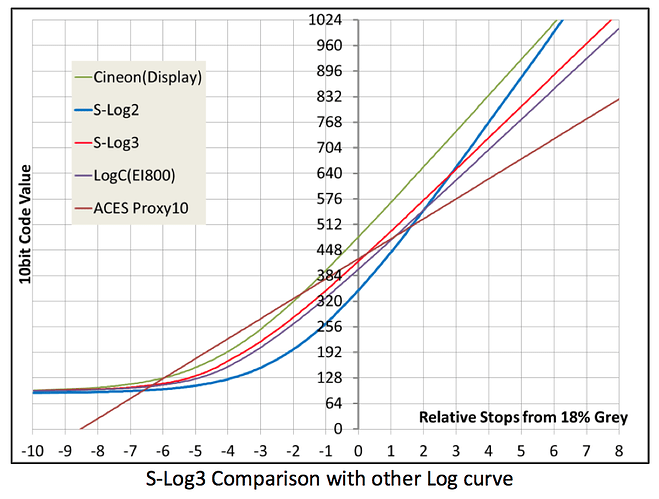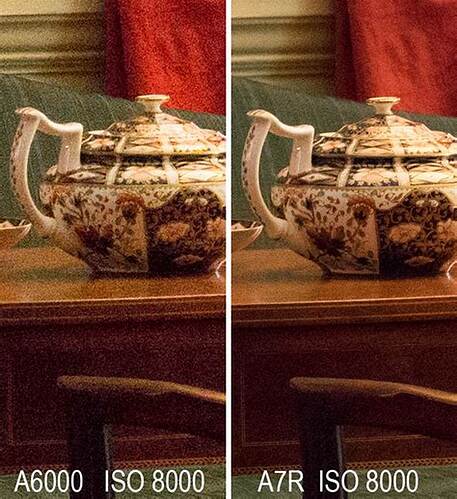This discussion, among many here, is pointing out the importance of having a workflow that is properly color and exposure calibrated, including the understanding/skill of the human component. From sensor to final output.
That’s why I shoot RAW.
George
Don’t play with words.
Sensors have filters to record energy on some precise range of wavelengths.
Photosites records how much energy hit them for each of the 3 range of wavelengths choosen.
This defines a range of possible colors.
So new working space has been added to retain any color sensors can provide.
Because adobe RGB can’t describe all colors actual sensors can provide.
Seems to me that ETTR makes sense more for log footage, not raw footage or photos. Log makes ETTR work because its not a linear curve its logarithmic, and has been designed to protect highlights, but at the expense of noise in the shadows, so exposing to the right or ETTR makes sense to have low noise and still be able to preserve highlights because of log curve. With linear raw data, it really does not make much sense to do that because there is no need to do that. Log curve was invented for video, mainly because processing raw data for video requires a lot of processing power and takes a lot of space on the card. Shooting Log, allows for preservation of the high dynamic range with far easier to process process of recording with far smaller file size, unless you want to shoot in something like ProRes etc.
I shoot ETTR for video when shooting log, which is almost always. But I never shoot log or ETTR with photo, since its easy to shoot and process RAW with most cameras. Now if you want to make a creative choice, of overexposing one part of the image for creative reason, that’s another story. Than yes. You can underexpose or overexpose for that reason. Or you can simply shoot bracketed for HDR post processing if you want to retain whole of the dynamic range.
Well, it does make a difference according to my tests with my cameras. YMMV.
Well, I would like to see the results of these tests you made. If you still have them.
ETTR is really all about optimizing noise in low light scenarios particularly on sensors that are not ISO invariant (mostly canon sensors and some Nikon sensors)
If your camera is iso invariant in the iso range you’re shooting (things like dual gain sensors come into play) then ETTR doesn’t buy you anything and you simply risk highlight clipping for no added benefit.
If your camera isn’t iso invariant you can sometimes improve noise performance by increasing the ISO and then bringing the over-exposure back down in Photolab. But you risk blown highlights.
Google “iso invariance” for more reading on the subject. And of course if you can add light with a slower shutter speed or wider aperture that will always improve noise performance.
The idea of ETTR is that noise is of a fixed value. By overexposing if possible and afterwards reducing the exposure, one also reduces the noise.
I see @MikeR also responded.
George
Yes only if you overexpose with a larger aperture or slower shutter speed. If you’re doing it by adjusting ISO then the answer is it depends on your camera. (See my previous response.)
My general assumption in the case of low light photography is you are already collecting as much light as possible. (As many photons)
ETTR is usually done at base ISO. Engaging a lower than base ISO (without ETTR) will increase the exposure and can lead to lower noise images…because of the ETTR consequences of such settings.
I’m saying on a canon camera you can increase ISO and gain a noise benefit without changing your aperture or shutter speed.
At the same time underexposing 1-2 stops with same aperture and shutter speed because your iso is too low gives you a noise penalty you don’t get on Sony or Nikon cameras.
PhotoShop has a 32 Bit Mode. Raw camera files from Canon can be previewed on Google Drive.
Raw Vs Log
Yes.Also some sensors can recover more from shadows with no noise penalty than they can in the highlights.
I think that kind of fiddling made more sense in early days, but Sony sensors were known to recover shadow with no noise problems far beyond older Canon sensors. Nikon started using Sony sensors so its pretty much the same as Sony.

Further more, it depends on the size of the sensor, and how much light gathering capacity it has. From same manufacturer like Sony, there can be differences.
off course with DXO DeepPrime AI noise reduction and similar software, the whole ETTR shooting mythology becomes irrelevant.
Yes.
This can be particular useful, because you don’t have to sacrifice shutter and aperture for changes if you want a particular look. You can use ND filter to cut down on the light but you can’t do that in dark room, so dual native ISO really comes in handy. Especially in video.
I agree with everything you say except this.
In the end, DeepPRIME provides some magic noise reduction and detail recovery capability.
But starting with a less noisy source image should always yield a less noisy result.
I’d boil it down to this if you’re trying to minimize noise in your final image:
- always capture as many photons as possible. Of course there are practical limitations and trade offs with motion blur and narrow DOF caused by wide aperture. But always capture as many photons as possible.
- set iso appropriately for good exposure if you shoot sony or Nikon. If you shoot canon and have some highlight room, push the iso up 1/3 or 2/3 stop to gain a slight noise advantage.
- Always use DeepPRIME in post on your RAW file.
I agree.
Although with modern cameras, sensors and lenses and good post production software, the room to be flexible with shooting is bigger than ever. But I agree with good practices you listed. I’m used to being more careful with video since there I don’t shoot raw, but with photos, I find that one can get away with a lot. That being said, yes if quality, especially for larger prints or pixel peeping is important, one should stick to good practices.
On top of less noisy also most sensors tend to have better dynamic range and better color reproduction when properly exposed with good practices as you mentioned. For some images this can be important. For others less so.
I recently discovered 10-bit log profiles for video and it’s SO much better than shooting with no profile. You know this already. But for me it was a big revelation.
Hehe, oh, yeah.Speaking of ETTR, 10-bit log that is really flat, like Slog3 from Sony or something like that. Really makes a difference. Important to properly expose it and get the white balance in the ballpark,
I mean any video profile is a lot of things in a container, both audio and video codec and all sorts of the other things, like bit depth, 8bps or 10bpc, color profile, curve off course, data rate, compression method etc. But some 8bpc codecs even with h264 are surprisingly flexible. On Sony, not sure if you use Sony or some other brand up to slog 2 which has less steep curve, one can get away with 8bit , but slog 3 not so much , it really needs 10 bpc. When working in resolve most computing is done in 32 bit so that helps, and when converting the log to rec709 , well made LUT can make a big difference in the quality of the output. Speaking of luts. Here is a great website I use, you might find it useful. You can make your own luts.
http://cameramanben.github.io/LUTCalc/LUTCalc/index.html
Also if you are into Resolve and working with LUTs and power grades and log footage. I suggest you check out. a guy name Juan Melara
Also great Vimeo Channel.
Juan Melara - Insider Knowledge - An easier way to grade log footage
With blog post: Insider Knowledge - An easier way to grade log footage — JUAN MELARA
Thanks for the info. I’m a Sony guy. I shoot A1 and almost always 8K 10-bit 4:2:0 Slog3. The footage is so good.
Am also a Davinci guy but really learning there. A long way to go.
Oh, yeah, than I don’t need to tell you. Hehehe. As for Davinci, amazing tool. Especially latest release. With DXO PhotoLab and Davinci, I feel modern hybrid cameras , especially something as top of the line as Sony A1 really can reach their potential. There is only so much hardware can do, software can really take it to the next level. User is off course critical in both parts of the process. But still. We can do more these days than ever before. And even older cameras can extend their life with DXO or Davinci tools.
I have t even scratched the surface on Davinci. So much there.


